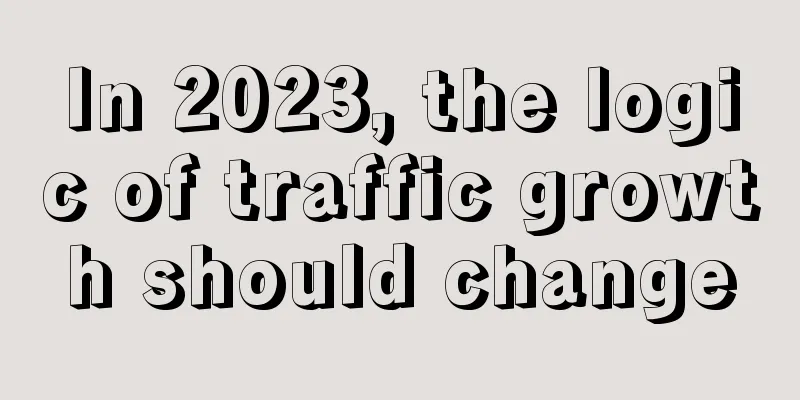What can brands learn from the popularity of temple coffee?

Starbucks seems to be abandoned by young people. Its first quarter 2023 financial report showed that same-store sales in the Chinese market fell by 29%. Even Starbucks interim CEO Howard Schultz said when talking about the financial report:
Starbucks' decline is no secret, and the public has long been aware of it. On March 15, a topic “Why are fewer and fewer people drinking Starbucks?” topped the top three trending searches on Weibo, which was considered to have torn off Starbucks’ last fig leaf. However, what’s interesting is that while the topic of “Why are fewer and fewer people drinking Starbucks” is being discussed, another topic is equally hot, even more so than Starbucks:
Yes, when Starbucks was struggling in the chaos of the coffee market where new players emerged in large numbers, contemporary young people had already abandoned Starbucks and turned to the temple. Don't get me wrong, there's not that much disillusionment. Contemporary young people only choose great sadness, medium sadness, and super great sadness when faced with Starbucks’ medium, large, and extra large cups. 1. When faced with a medium, large, or extra large cup at Starbucks, choose Great Compassion, Medium Compassion, or Extra Great Compassion
A few years ago, I would never have thought that a new species like "temple coffee" would appear in the coffee circle. Moreover, it is so popular. How popular is it? Yongfu Temple has Cibei Coffee, Faxi Temple has Muhuanxi Coffee, Deoksugung Palace has Deoksugung Coffee...one temple, one coffee has become the new standard. Young people who went to Lingyin Temple in Hangzhou, Yongfu Temple, Jade Buddha Temple in Shanghai, Longxing Temple in Taizhou, Nanputuo Temple in Xiamen and other temples to drink coffee were almost crowding through the doors of the temples. The "Ci Cup" coffee at Yongfu Temple was "out of stock", the fresh milk was used up in one hour, and even the cups were in short supply. The coffee seller shouted:
Indeed, the popularity of temple coffee is inseparable from the rising interest of young people in "praying to Buddha" in recent years. According to Ctrip data, the number of orders for temple-related scenic spot tickets has increased by more than 300% year-on-year since the beginning of this year. Judging from the search popularity, people born in the 1990s and 2000s account for nearly 50% of those who book temple scenic spot tickets. The number of people entering the Yonghe Temple in Beijing has been restricted, the purchase of the eighteen-seed bracelets at the Lingyin Temple in Hangzhou has been limited, and a one-kilometer-long queue has formed in front of the Guangren Temple in Xi'an. The number of posts and reading data on related topics on social platforms has also skyrocketed. However, the public’s growing interest in praying to Buddha does not mean that the popularity of temple coffee is entirely due to “God’s guidance”. Behind the popularity of temple coffee, there are many things worth Starbucks' attention. 2. Behind the popularity of temple coffee, brand "deconstructionism" has won a great victorySo, how does temple coffee capture the hearts of today’s young people? The first is differentiation. 1. Differentiation: Temple + Cafe, Play with DifferentiationIt has to be said that today's coffee shops are no longer a novelty to the general public. However Temple+Cafe is. Coffee from the West actually comes from the hands of Eastern monks. The monks no longer hold Buddhist teachings in their hands, but wash their hands to make coffee... All these scenes are full of freshness just thinking about them. The collision of Eastern and Western cultures has made everything different, and the unique environment of the temple makes temple coffee have a differentiated experience that ordinary coffee shops cannot achieve. Yes, if we regard temple coffee as a "category", we will find that this category is uniquely blessed in terms of the environment and field , and possesses a "purification barrier". Walking into the temple, the monks chanting attentively, the believers praying devoutly, and the sound of the bells... all of these form a field that will naturally draw you in. It makes people subconsciously feel that thinking about work, schoolwork, and money in the world of Buddha is a blasphemy to Buddha. Then, the worldly troubles are thrown behind your mind, and your heart is suddenly emptied. If you can't empty it, you can only kneel down devoutly. Be more devout, and be more devout, asking the gods to take away the troubles that cannot be emptied. In addition to their unique location advantages, temple cafes are also very good at finding their own "differentiated positioning". After Cibei Coffee became popular, temple coffee shops sprang up like mushrooms after a rain, but they did not completely copy the "positioning" of Cibei Coffee. The Jiafu Coffee at Beijing Tantuo Temple focuses on praying for good fortune, the Caiyuan Coffee at Caishen Temple focuses on praying for wealth, the Xide Coffee at Lingyin Temple focuses on praying for children and a career, and the Faxi Temple focuses on praying for marriage... The corresponding product designs also have their own characteristics. The differentiated positioning of temple coffee shops not only avoids direct competition to a certain extent, but also establishes their own differentiated brand awareness. 2. Details: The experience details are in place, and the brand's "deconstructionism" wins bigOf course, you might say that there have been Starbucks in temple scenic areas for a long time. For example, Starbucks moved into Lingyin Temple as early as 2012, and only bid farewell to Lingyin Scenic Area last year because the lease expired. And despite this, there is still another Starbucks in the scenic area. Why did the Ci Cup win so much? Behind this, it is inseparable from the successful deconstruction and reconstruction of the "temple + cafe" elements by temple cafes. Many times we find that putting together things that people would not associate together will give people a refreshing experience. The reason is that they deconstruct things by reorganizing them, thus subverting stereotypes and successfully breaking the pre-established harmony (see note ①), giving consumers satisfaction beyond their expectations. Moreover, the ways of brand deconstruction are now very rich. Whether it is Tengger singing "Love Cycle" in a cross-dressing role at the B station New Year's Eve party, or the joint brand of Kaws and Uniqlo, they are all a kind of deconstruction. It can be said that the cafes that were previously opened in temple scenic areas were really just "opened in the temple" and did not really deconstruct and reconstruct the two elements of "temple" and "cafe". Therefore, they were not very popular. However, the popular series of "Temple Coffee" is different. Take the example of Tzu Cup Coffee. The name is taken from the homonym of "compassion", which means "to be compassionate", and was written by the great monk Yuezhen of the temple. They also gave each type of coffee a name that "adapts to local customs". Americano is called "Difan", Mocha is called "Huanxi", Latte is called "Tingxue", Matcha Latte is called "Tingshanyu"... The illustration on the coffee cup also has obvious Buddhist elements The product called "Suiyuan" combines the popular "blind box game" with the custom of "lottery in temples". You get to drink whatever you draw. All kinds of immersive experiences are full of cultural belonging, and consumers are naturally immersed in the game. The key to deconstruction is reconstruction. Dismantle cultural symbols and reconstruct them to make them more suitable for today's public, thus bringing new and better experiences and feelings to the public. Refactoring is not an easy task. If it is done well, it can produce a wonderful chemical reaction; but if it is done badly, it can easily make people feel out of place. Looking at the ways in which temple cafes operate, we can see that they not only carefully explore the subtle elements of Buddhist culture, but also give new life to traditional culture through clever "reconstruction". What’s more worth mentioning is that temple coffee shops are not only well versed in “brand deconstructionism”, but also have iterative thinking. Let’s take the example of Cibei Coffee. After a year, we can see that Cibei Coffee has not only iterated its cup packaging design, but also improved its product quality. This year, Cibei Coffee also learned from new tea brands and launched a limited edition coffee for the Year of the Rabbit. This coffee is uniquely designed with a pull ring on the cover. When customers peel off the pull ring on the cup cover, they can see blessings such as "make a fortune every day" and "become rich and powerful" just like scratching a lottery ticket, allowing everyone to "uncover blessings and welcome happiness" and meet their expectations of praying in the temple. With a deep understanding of brand deconstructionism and iterative thinking, the rise of Temple Coffee is not difficult to understand. However, the fact that Temple Coffee has become a phenomenal hit and has remained popular for more than a year is another story. 3. From point to surface, subverting the previous communication logicThere are many ways for a brand to become popular, and the communication paths behind them are also different. I simply summarize its propagation paths into three types: point propagation, linear propagation, and surface propagation.
If you carefully observe the path of Temple Coffee's popularity, you will find that their communication methods range from point to surface, involving three communication methods. And they have gradually formed their own unique brand rituals, which can continuously attract contemporary young people to experience and check in. It is from the packaging of Ci Cup coffee that young people have derived the saying "Are you moderately sad, greatly sad, or extremely sad today?" The reason why temple coffee has achieved such great success is inseparable from the underlying logic behind it. 4. The underlying logic behind the rise of temple coffeeI have previously seen a public account author mention the term "social emotional power". She pointed out that “the emotional value and cultural identity that brands provide to consumers are reshaping the business landscape of contemporary society.” This is not an exaggeration. Once upon a time, Starbucks rose rapidly by relying on its accurate grasp of the public's emotional value needs. The third space mainly refers to the space experience service that Starbucks provides to consumers, which meets people's current demand for multifunctional and flexible office and business social space. Using coffee as a social glue to provide people with cultural, spiritual and environmental experiences is the core of Starbucks' definition of the "third space". Simply put, what consumers buy at Starbucks is not just a cup of coffee, but also a "space service" where they can rest, talk, and meet. Obviously, Starbucks at that time had keenly realized that with the rapid development of productivity, consumers were no longer satisfied with the functional value of products, but followed Maslow's hierarchy of needs and began to seek higher-level "emotional value." However, Starbucks has gradually deviated from its original intention. If you search for "Starbucks experience" on the Internet, you will find mostly negative comments. Under the hot topic on Weibo, "Why are fewer and fewer people drinking Starbucks?", most of the comments were complaints about Starbucks' products and services. The fundamental reason why temple coffee has become so popular is that it closely follows the emotional value needs of the public. Through continuous experience iteration and optimization, it has continued the communication line and gradually formed a cultural ritual and cultural field unique to the temple coffee category. Phoenix.com reported that in addition to drinking coffee and visiting exhibitions, young people can also receive legal advice, psychological counseling and a variety of training courses in some temples. Temples have long become multifunctional and complex public places. In topics related to temple coffee, we can always see such words:
Behind the repeated mention and spread of these words is the anxiety and helplessness that contemporary young people cannot resolve. However, these anxieties are simply laughed off by most brands, but are carefully resolved by temple coffees. This is the fundamental reason why temple coffee shops defeated Starbucks. Notes: ① Predetermined harmony. Predetermined harmony was originally a philosophical concept, and its basic meaning is "When God created the world, he made the development and changes of all things maintain harmony in advance, so as to ensure the order of the world." In Japan, the meaning of predetermined harmony is extended to "If anyone develops according to the predetermined process, the results of all actions will be the same as expected. 7-11 founder Toshifumi Suzuki used it in his product strategy, defining "breaking the predetermined harmony" as "always exceeding expectations." Author: Bing San Source: WeChat public account "Chief Brand Think Tank (ID: cbocmo)" |
<<: This small product has sold over 300,000 copies on Douyin
>>: The number of views has exceeded 60 billion, and Douyin has a new top streamer
Recommend
Who bears the tax on Amazon in the US? How to pay the tax?
Some of my seller friends are relatively strong an...
Help you clear away three layers of "fog" and give you insight into business opportunities!
For most people, not being able to find the right ...
Family members! Who knows! Can private domain traffic be done this way?
As the traffic dividend gradually declines, it is ...
Let’s talk about the truth about how stakeholders make money, why SAAS has no ability to resist risks!
I don’t know if you have ever thought about this q...
The most comprehensive summary, the standard process of data analysis, save it!
This article systematically explains the standard ...
10 suggestions from friends after 618
Weak consumption may be caused by a variety of fac...
What are the tips for printing Amazon FBA labels? Tips to share
Amazon products are generally stored in warehouses...
This is how annual targets should be set, not by guesswork.
As the year-end bell approaches, many companies ha...
10,000 words to explain the private domain KOC system and change the whole domain operation idea
The author wants to use this article on the KOC op...
Xiaohongshu closed Little Oasis. What is the reason?
Recently, Xiaohongshu announced the closure of Xia...
How many sites does eBay have? Which one is easier to do business with?
Among cross-border e-commerce platforms, eBay is a...
GAC Honda's "High Energy Monday": Activating the User's Success Code
Why is GAC Honda's "High-Energy Monday&qu...
After the payment is connected, Alibaba's subsequent prospects for finding new traffic
With the news that Taobao will soon be connected t...
The recent trend of Xiaohongshu in the pet industry! How to achieve conversion and dissemination?
Although the birth rate has decreased in recent ye...
With 1 report, you can master data analysis and leverage stock conversion!
Are you easily dazzled by the complex data indicat...









